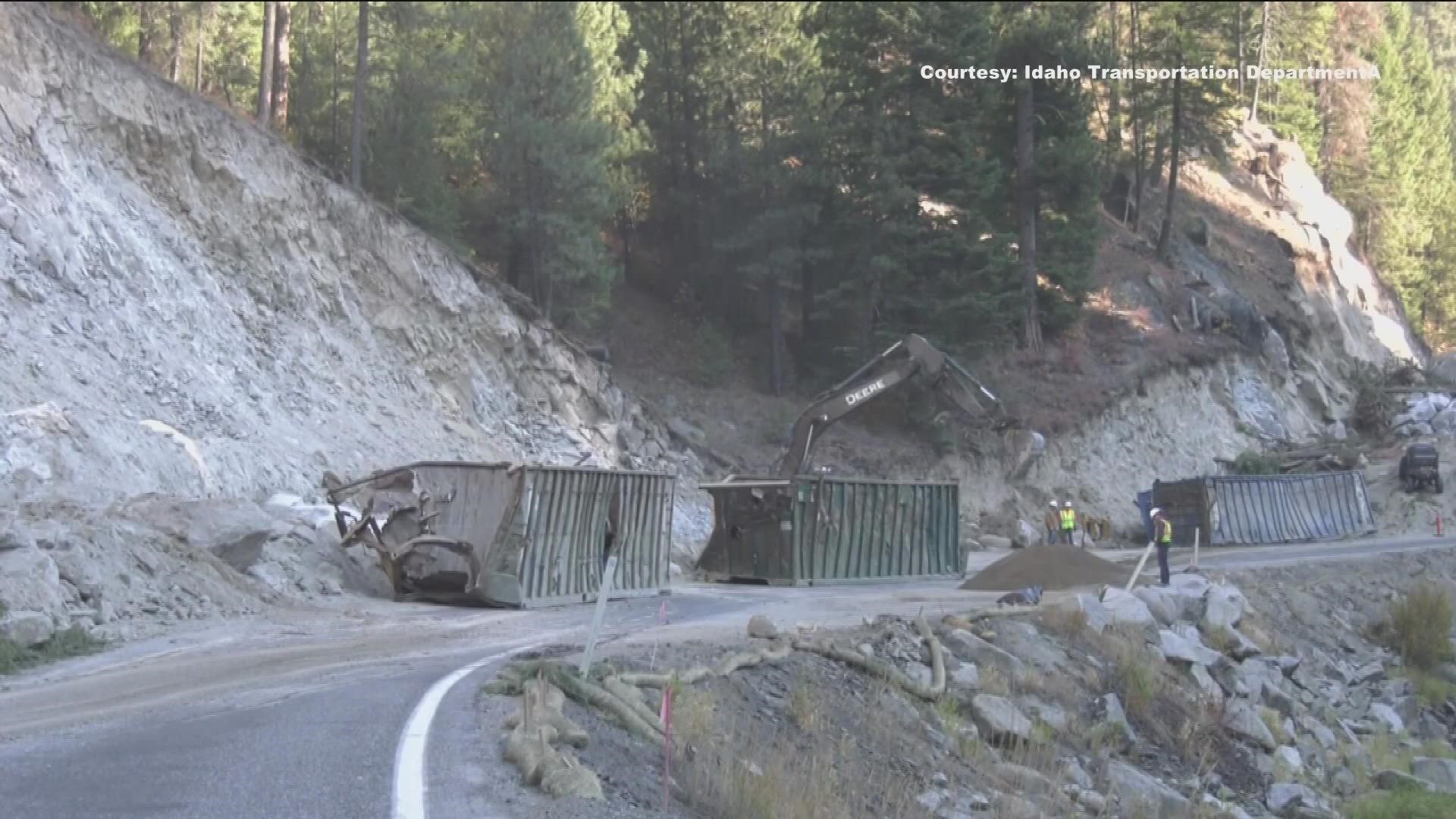‘Getting dangerous’: ITD knew of Idaho 55 issues before major slide that narrowly missed a driver
A review of thousands of pages of records reveals years of warning signs at the site of a state highway project in Valley County, now millions over budget.
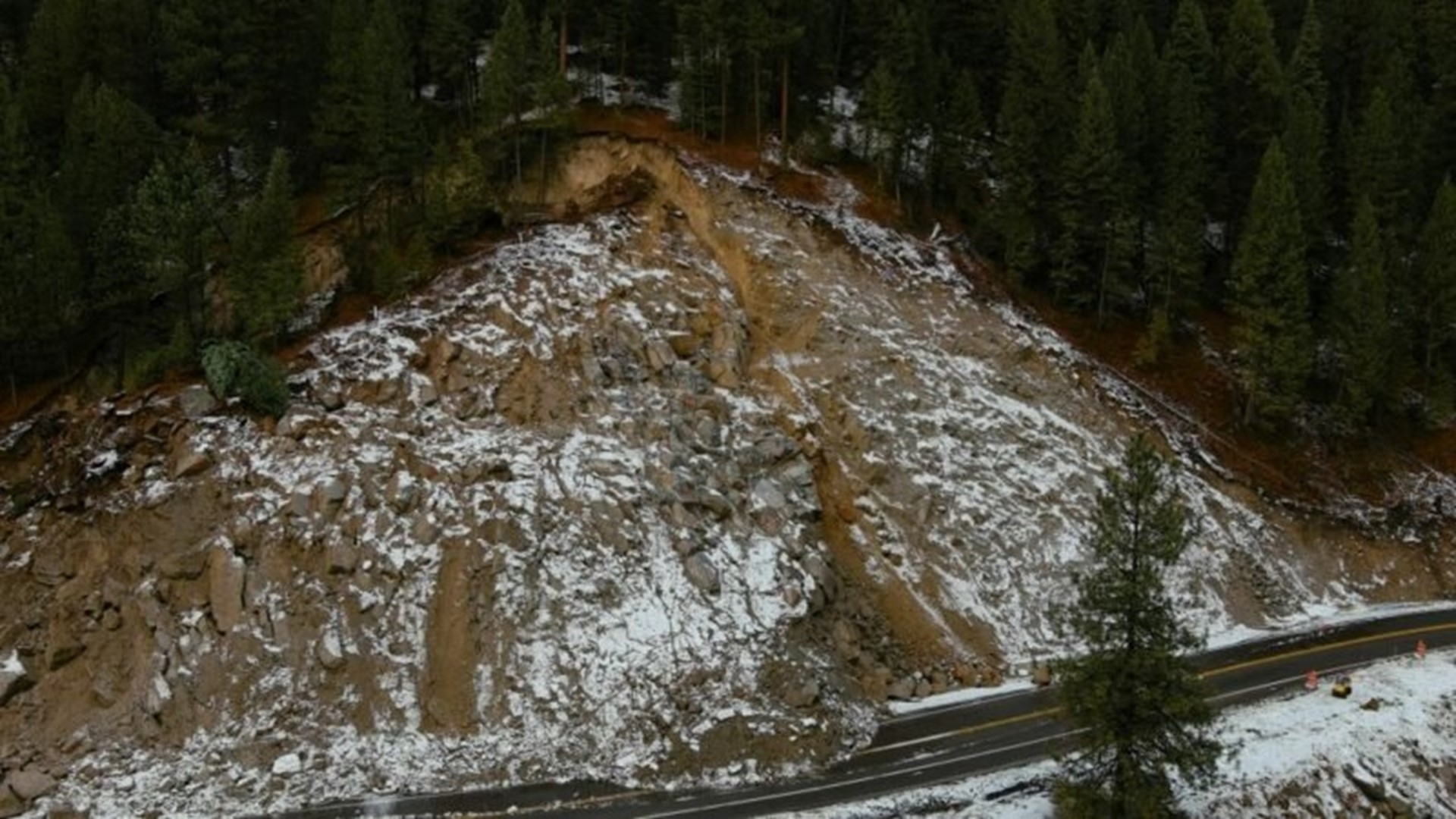
Editor's note: This story was originally published by BoiseDev.
On a crisp, late fall day last year, less than 200 feet made all the difference on Idaho Highway 55.
Just after 2 p.m. on Nov. 18, 2021, a traffic safety vehicle guided a line of cars through the tight construction zone in the canyon alongside the picturesque Payette River. A rumbling sound rocked the air. High above the road, tons of material crashed down from the blasted cliff face and spilled across the highway.
The slide came a mere 150 feet from crushing the TrafficCorp pilot car and any others following behind on their way through the Central Idaho artery. It took weeks for the road to reopen to traffic.
This was the second of three major landslides that closed the corridor over the course of less than a year from March of 2021 through January, disrupting traffic between the Boise area and Valley County for days at a time. The slides all occurred within the construction zone for ITD’s ambitious multi-year project to flatten the curves of the winding, crash-prone highway snaking through the canyon.
Six-month investigation
Over the last six months, BoiseDev reviewed thousands of pages of public records, inspection documents, and emails from ITD officials, consultants, and engineers responsible for the design and construction of ITD’s work to blast the canyon walls and widen the road over the course of September 2020 through late fall of this year.
The records revealed years of warning signs of unstable slopes, raised questions about the rigor of geotechnical analysis prior to construction, and pointed to a price tag of between $15 and $20 million more than the $25.7 million original bid. An increase in the range of about 60 to 75 percent.
Prior to BoiseDev’s reporting, the general public did not know how close the November slide came to injuring or killing workers and travelers. The public also did not know the extent of the unstable rock discovered as far back as 2019 in the specific area where slides later occurred.
Records also turned up evidence pointing to one of the slopes that gave way being mistakenly blasted at a steeper angle than the design called for. The documents also show one ITD engineer’s extensive concerns about the project.
BoiseDev sent ITD a list of more than 30 specific questions about the project and the contents of the public records. Agency spokesman John Tomlinson responded a week later with a general statement, which did not answer the majority of the questions asked. ITD didn’t comment on why it kept the road open, even with concerns about slope stability, what sort of early testing was done on the slope or why the hillsides weren’t cut at shallower angles until after slides hit the project. The agency even declined to provide a map of the various so-called “cuts” along the construction zone.
“Safety of the traveling public is always ITD’s top priority, and we are taking the extra steps necessary to ensure this project results in a safe roadway for years to come,” ITD wrote in the email. “We appreciate the patience of communities and businesses along SH-55 that we have been reaching out to with updates during the work. We also appreciate the drivers on SH-55 for helping keep safety a priority through the work zone, and for the feedback, we received from the public and area business owners on minimizing future closures.”
“During construction of a mountain highway job of this type, it was not unexpected to learn more about the 9 cut slopes during construction and to adjust the engineering to fit the terrain, which was nearly 300 feet high and 500 feet long in less than a mile of highway distance.”
Early rumblings of instability

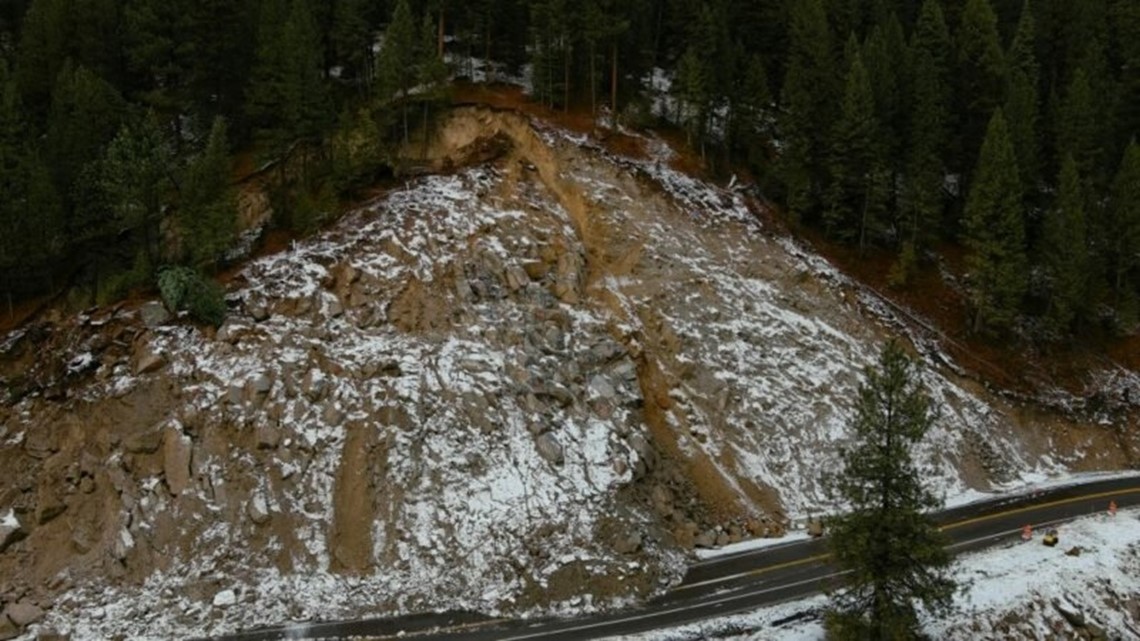
One of the slopes in the project has been giving ITD engineers fits for years before that exact spot in the hillside gave way and closed the road for ten days.
In May of 2019, the agency submitted an environmental evaluation of the area to study how the project would impact the ecosystem and other factors prior to construction. Part of the project’s original design called for slopes blasted at steep angles along the canyon, up to 90 feet in height. This would require stabilization in order to reduce maintenance and protect the public from rock falls. Engineers divided the project into different sections they planned to blast labeled numerically, referred to as “cuts.”

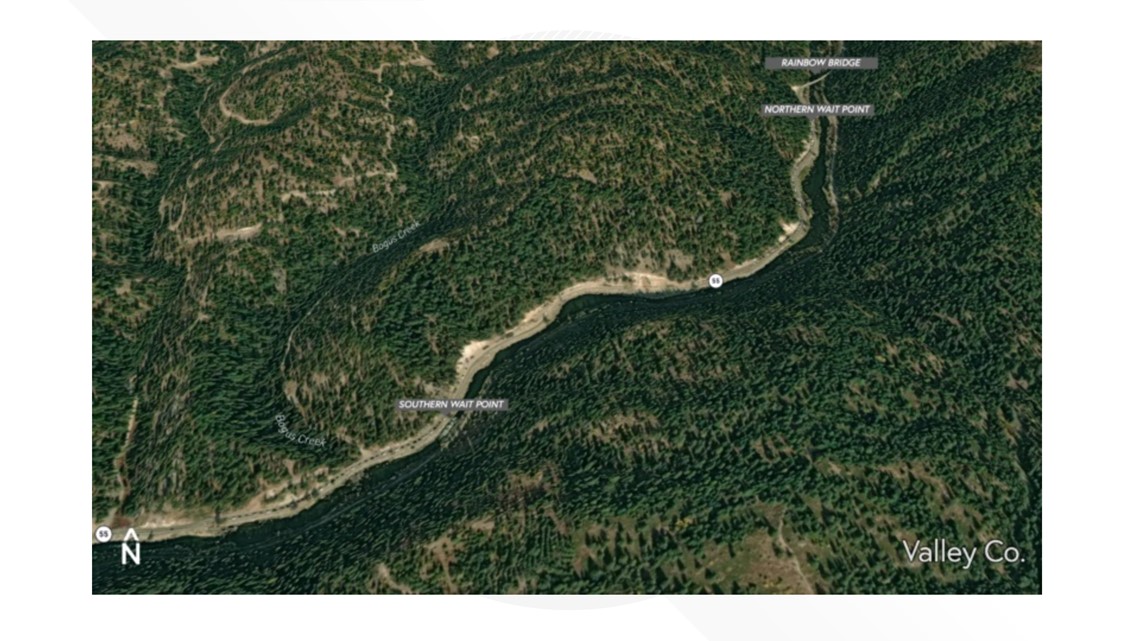
But, as design progressed through the summer, project engineers started to have doubts about the stability of the slope. During the course of BoiseDev's reporting, the outlet obtained an environmental reevaluation report reworking the design. the cover of the document has two dates on it: "Original Approval Date 6/19/2019" and "Last Reevaluation Date 8/22/2019." There is also a signature page at the end of the document, which contains no narrative text, dated May 26, 2021.
This paperwork reevaluates the design, particularly at Cut 8. The original design called for rock anchor bolts drilled into the hillside to stabilize the steep angle of the blasted canyon wall, but after "much excavation and thorough geotechnical analysis," ITD decided this design wouldn't be adequate due to unstable rock.
BoiseDev's original reporting cited this report, and the knowledge of unstable slopes, as having been filed in the summer of 2019 due to misleading dates on the cover page. ITD did not respond to direct and detailed questions about this report in the over a week the agency had prior to the publication of this story. The agency described this in its report to Gov. Brad Little, but did not directly respond to BoiseDev.
ITD confirmed work to redesign the project occurred after the first landslide in its statement to BoiseDev, saying geotechnical engineering firm McMillen Jacobs Associates was not brought on until after the first significant slide hit the project in March of 2021. But even if the project was redesigned in 2021 instead of 2019, BoiseDev’s reporting still uncovered emails showing difficulties at Cut 8 and raised questions about the geotechnical analysis of the rock face leading up to the slide in November.
First slide rocks the project

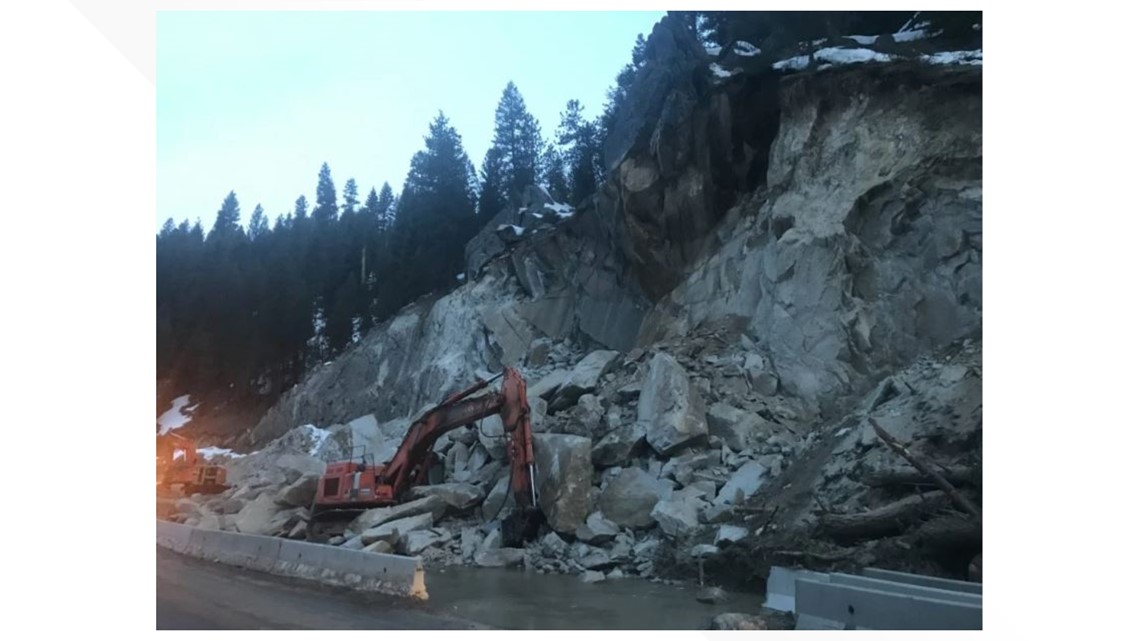
ITD’s first major rockslide on Idaho 55 hit in mid-March 2021.
Around 10 p.m. on March 15, 2021, ITD Inspector Rob Wilson got a phone call informing him of a “good size” landslide at the construction zone at Cut 9, one of the numbered portions along the canyon where ITD planned to blast into the rock wall. No one was hurt, but the slide was powerful enough to push an excavator to the side of the highway and bury another in the rubble.
ITD initially told BoiseDev at the time that the slide was not related to the construction. Weeks later, the agency admitted it was.
Once the dust settled, ITD Geologist Brian Bannan, who did the slope analysis for this portion of the project, discovered the angle of the hill had been cut at 76 degrees, which is more extreme than the 60-degree angle he proposed in the original plans. ITD did not respond to questions asking about how the hill was excavated at the wrong angle.
Bannan cautioned staff about drawing any conclusions about the slope failure ten days out from the incident, but he raised concerns about the rigor of the soil testing completed in the area in a March 25, 2021 email, which appears to refer to the work completed by local engineering firm American Geotechnics.
“In general, most all materials reports by consultants are a problem,” Bannan wrote. “The reports appear to be written for their egos and (cover your ass) not for the customer.”


This first slide pushed ITD engineers to start reevaluating the project, opting to roll the slopes back at shallower angles with more digging and fewer rock anchors to stabilize the steep hills the original design called for. In an email from Project Engineer Alex Deduck on April 5 to ITD Geotechnical Engineer Dave Richards, Deduck said the plans to contain rock falls would have failed if ITD never changed course.
“It seems for this project, the structural integrity of the rock was never looked at,” he wrote. “Our pinned mesh anchors would not have sufficed and slides similar to (Cut 9 and Cut 5) would continue to happen.”
At this point, ITD hired McMillen Jacobs to start advising the state on amending the existing project design, evaluating the stability of the rock at each cut, recommending new angles for all of the slopes, and designing rockfall protection measures.
“The geotechnical engineering recommendations were to flatten the slopes, remove rock outcrops, add rock dowels, or install steel netting to increase stability. We adjusted the contract to address the new plan to flatten slopes and add rock dowels for long-term stability and resiliency,” ITD wrote in the email about bringing on McMillen Jacobs. “To accomplish this, we invested in the contractor removing an additional 200,000 cubic yards of material to achieve the final geotechnical engineering upgrade. That would be the equivalent of approximately 16,000 truckloads of material.”
The state also purchased more land to expand the footprint of the project after the slide, paying $26,406 to an entity controlled by the Wilks Brothers, Texas-based developers who own land adjacent to Highway 55.
Second slide strikes in spot with years of concerns

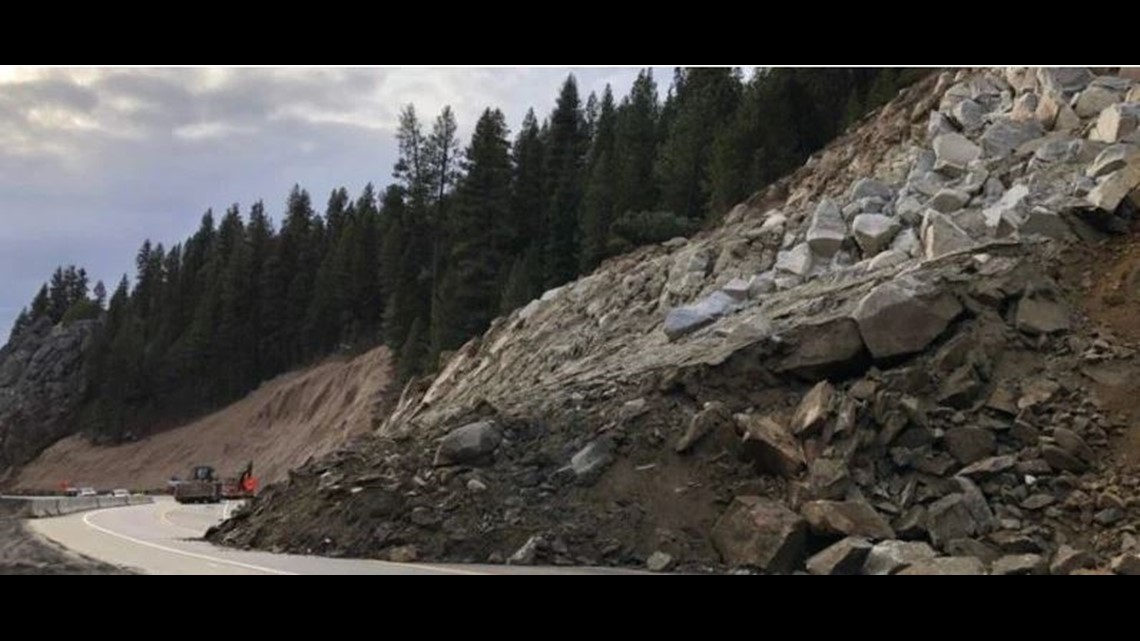
While the first landslide came with little warning, signs of instability continued at Cut 8 after it was flagged for a pre-construction redesign in 2019.
On Sept. 23, 2020, a construction inspection report noted that engineers held a meeting specifically to discuss how to stabilize Cut 8 and “what to do about the unstable material in that area.” Emails obtained by BoiseDev noted that as the Clarkston-based contractor M.A. Deatley started excavating, all the workers found was “uncompetent (sic) rock, the occasional boulder and dirt.”
A September 24, 2020 email from ITD Project Engineer Alex Deduck discussed the details of the meeting held about Cut 8, which said the contractor would continue to excavate the hillside at a steeper slope until they found rock solid enough to proceed with the original plan. An email back to Deduck from Keith Nottingham, an engineering geologist with American Geotechnics, said the hillside is being excavated at a 68-degree angle, which is steeper than the environmental design called for the year earlier.
ITD did not respond to BoiseDev’s question asking why the slope wasn’t being cut at the shallower angle designers recommended in 2019.
Deduck wrote back to Nottingham two days later in September of 2020, noting the agency is “stuck with the original direction given to the contractor” on Cut 8. ITD did not respond to questions from BoiseDev about what “original design” the agency was stuck with.
“An additional 10-ft has been excavated on Cut 8 with no change in conditions and the first rock anchor was drilled to a depth of 16 ft,” his email said. “At this time we are comfortable moving forward with the information we have on Cut 8.”
A construction inspection report from October 13, 2020, noted more “sloughing material” coming off of Cut 8 and the need for a soils engineer to study the area to decide what steps needed to be taken to stabilize the hill. Workers had drilled up to 30 feet into Cut 8 and still not hit any solid rock.
McMillen Jacobs also flagged the area as problematic in the analysis of the slopes the firm conducted at the request of ITD after the March 2021 landslide. In the July 2021 report, the firm noted plans to shape the slope to a 45-degree angle due to “extremely weak to very weak rock” in the area.
Major slide hits Cut 8
Even in the days leading up to the slide at Cut 8, ITD had warning signs of instability on the hillside as traffic continued to flow through the area.
In early September, McMillen Jacobs Engineer Bill Gates sent an email to ITD about what he was observing at the construction site. He noted “minor sliding” in the area of Cut 8, writing there was “still room” to reduce the angle of the slope to 45 degrees as suggested in 2019, but he also posed the idea of planting grass on the hillside to help the earth stay in place. A mid-September report said Cut 8’s minor slides were caused by increased pressure from groundwater seeping through the hillside.
ITD Inspector JD Lewelling filed a report on November 9, 2021, saying it was “raining and snowing so hard that the material on the hillside (of Cut 8) kept sloughing off” and it prevented workers from getting any traction on the hillside. He and another inspector, Jake Hall, ultimately made the call that “it was getting dangerous for them to be on the hillside when material was coming down.”
A crew from Idaho News 6 was brought to the construction zone to interview Deduck, the project engineer, on November 17. Emails between news staff and former ITD PIO Jake Melder show journalists were provided with hard hats and reflective vests for their visit, but there was no mention of the weeks of hill stability concerns while scheduling the shoot.
Video of the segment shows the crew right along the base of the wall in multiple locations.
Twenty-four hours later, hundreds of cubic feet of rock and earth crashed down on the highway in this exact spot.
At no point in any of the emails reviewed by BoiseDev where the stability of the slope was brought up was there any discussion of closing the road to traffic. ITD did not respond to a question about if there was pressure to keep the road open long-term.
On November 18th, the contractor was preparing to reopen the construction zone after midday blasting when the hillside experienced a “catastrophic failure” at Cut 8 and the hillside came down 150 feet in front of a pilot car driving through the construction zone. All traffic had to turn around and head back the way they came due to the road closure.
The road did not open to traffic again until December 6.
Cost overruns
This project, and the clean-up from the unexpected landslides, didn’t come cheap.
As of December 2021, the project had already run up roughly $24 million in costs, leaving only $1.6 million left in the construction fund, according to an email from Deduck. At this time Deduck estimated there was another $7.3 million in expenses left to pay, not including major items such as the emergency construction on Cut 8 after the landslide, final construction on Cut 8, the remaining blasting and excavation on Cut 3, maintenance and hours for flaggers controlling traffic.
In ITD’s response to BoiseDev, the agency noted that the board chose to update the contract budget to finish the project. The agency did not respond to questions asking how the additional $15 to $20 million impacted the budgets for other state highway projects.
“To accomplish this upgraded work the department and the Board made a decision to update the contract budget to approximately $40-45 million pending final contract negotiations and work,” the agency wrote. “At the end of the work, which is on schedule to complete this year, we will have a straighter, wider, more user-friendly highway through this river canyon.”
Third time's (not) the charm

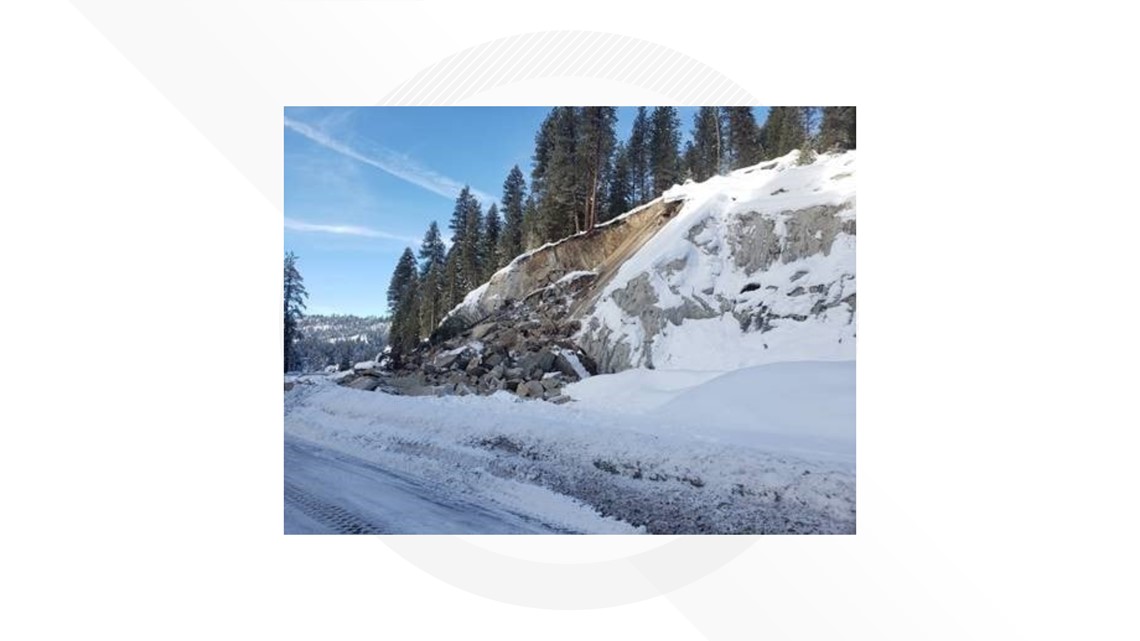
The third and final major slide to date occurred on the night of January 22, 2022. An email from ITD Engineer Manager Jason Brinkman details that the most “prominent knob” in the middle of Cut 5 failed.
“Here we go again… we had another rock fall on Smith’s Ferry,” Brinkman wrote to several staffers.
The debris fell straight down with some snow, a boulder, fallen trees, and a rock landing on the existing road. There weren’t any injuries though there were a few vehicles impacted by the slide that night.
“Several large vehicles, including a Maverik fuel truck, an Albertsons refrigerator tractor-trailer, and various private vehicles with trailers unable to be turned around and waited until a path through could be cleared at approximately 1:30 a.m,” Brinkman wrote in the email.
Just days after the slide, a contractor with DeAtley Construction, Dusty Forsmann sent an email that explained that the Occupational Safety and Health Administration, or OSHA, reached out to ITD regarding the Smiths Ferry rockslides.
“It sounds as if someone within the media reached out to OSHA in regards to a concern of workers being exposed to alleged hazards associated with the rockslides at Smith’s Ferry,” Forsmann wrote.
It’s unclear if this is correct, or which news outlet may have reached out to OSHA.
Because of the contact made with OSHA, ITD was required to investigate and respond by the end of that week. Forsmann laid out the basics of what that response would look like with details including closing the road until further assessment, the hiring of McMillen Jacobs to assess the slide, and efforts made to stabilize the hill.
BoiseDev reached out to OSHA to inquire about reports regarding Smith’s Ferry. OSHA responded saying it was “made aware” of potential hazards workers were exposed to relating to the slide. OSHA went on to say that at the time this report was made there was no evidence or “indication” of a current hazard. Construction had been shut down for the winter, so OSHA conducted an informal inquiry. ITD responded with actions taken to protect their workers. OSHA considered ITD’s response satisfactory and closed the case.
'I will deny everything'
One of ITD’s engineers says he had questions about the project all along.
On Jan. 25, 2022, ITD geotechnical engineer Dave Richards sent an email to two other ITD staffers pointing to a host of issues he saw with the Idaho 55 project, which likely led to the series of landslides that marred construction. He posited that concerns about the project led to at least one engineer retiring because “it wasn’t going to be pretty.”
ITD did not respond to BoiseDev’s questions about the contents of this email and the concerns Richards raised about the project.
“I heard a rumor that this project accelerated (an ITD engineer’s) retirement because he didn’t want to deal with the anticipated problems,” Richards wrote. “Trying to design rockfall mitigation on what you think might be there is near impossible.”
Richards claimed a major mistake ITD made was hiring American Geotechnics to build a rockfall mitigation plan without drilling or completing any seismic refraction studies of the area to see what the exposed rock faces would look like after they were blasted. Richards also said he hoped for a wider catch ditch along the side of the road so any rock slides wouldn’t close down the highway, and to move the road further from the rock face by using a stabilized wall, adding “so this is my (cover your ass) and my I told you so statement.”
Richards also took issue with American Geotechnics’ reliance on pinned mesh to contain rockfalls on the site, which he said was used as a “Swiss Army Knife for all the rock faces” where a more specialized design would have prevented some of the falls. Reducing the use of pinned mesh on the hillside is one of the changes ITD made after the first rock slide in March, when McMillen Jacobs came in and the project went through some redesigns.
“I don’t think there is any one thing you can really point at as being the reason for all the slope failures because this project was going to be a monster regardless of who designed the rockfall mitigation, which is why I suggested they design/build it,” Richards wrote. “There is a lot of the history of this project I wasn’t privy to so please keep my comments between us non-combatants (I will deny everything).”
Why did ITD build in the canyon in the first place?
The vision for the current project wasn’t the only concept ITD explored.
An Environmental Impact Statement obtained by BoiseDev shows that the agency worked with the public and initially identified more than 25 potential alternate routes in the early 2000s. This was later narrowed down to four alternates before settling on continuing through the canyon in 2008.
ITD said the goal of the alternative routes was to try and make this portion of the crash-prone, narrow highway safer for travelers. All of those other alternatives, including options that went around the canyon, ended up being more expensive and difficult than widening the road in the canyon.


The first route listed is what became the current project. This route was picked for several reasons, including having the least environmental impact, the resulting safety improvements, not taking any private homes to widen the road – and it was the least expensive.
Another route explored was near the west side that went through the canyon. This route would have required about 84 acres of additional land to construct the roadway and three residences would have been displaced.
Then there were two east area alternatives considered that went around the canyon. These routes would have required more construction. The first would require the state to acquire about 171 acres of land and it would have also displaced two residences.
And the second east side route would have required about 188 acres of land to build the road. However, there would have been no residents displaced.
When considering routes, ITD determined Smiths Ferry Drive would not be a suitable road for a detour. The study noted that at the time Smiths Ferry Drive would not have been able to accommodate all the construction equipment and heavy traffic.
The current project was bid at $25.6 million all alternates would have cost at least double that. In 2008 the second listed alternate route would have cost about $68 million to construct, the third would have cost around $59 million and the final route was estimated to cost about $66 million.
The report listed several other benefits of less expensive alternatives, including the greater likelihood of the project being completed, a lower burden on public funds and taxpayers, and more opportunities to implement other ITD improvement/environmental protection initiatives.
BoiseDev’s Gretchen Parsons and Don Day contributed reporting.
Editor's note: An earlier version of this story attributed an environmental evaluation report to 2019, which ITD disputed in its report to Governor Little on June 30. The story has been updated to reflect this with more detail.
Timeline
Records obtained in BoiseDev's investigation provide a timeline of events from the planning of the Idaho 55 project and the beginning of work in the canyon to the slides, subsequent reopenings of the highway, and the email in which an ITD engineer raised concerns about the project.
2008: Study selects canyon route -- In the early 2000s, ITD and the public initially identified more than 25 alternate routes the expanded highway could go, but the agency settled on the canyon due to cost and the lack of impact to existing homes.
August 22, 2019: Engineers flag Cut 8 -- ITD submitted a reevaluation of the project in August 2019 after engineers learned the slope at Cut 8 was unstable. Designers recommended the hill be cut at a 45-degree angle, but this redesign did not happen for another year and a half.
Sept. 23, 2020: Inspection: "unstable material" at Cut 8 -- Emails obtained by BoiseDev noted that as the Clarkston-based contractor M.A. Deatley started excavating, all the workers found was "uncompetent rock, the occasional boulder and dirt" at Cut 8. This is where the second landslide later happened.
March 15, 2021: First rock slide -- The project had its first major landslide the night of March 15, 2021. It was later discovered the hillside was blasted at a steeper angle than designs called for.
April 2, 2021: Road reopens after first slide -- Traffic began moving through the construction zone after the landslide two weeks after the incident.
April 5, 2021: ITD changes course on design -- Internally, ITD moved to change the project design with shallower slopes after the first landslide. An email from Project Engineer Alex Deduck noted plans to stop rockfalls would have failed if ITD didn't change course.
April 9, 2021: ITD publicly admits slide related to construction -- After initially saying the rock fall had nothing to do with the construction, ITD released new information three weeks after the incident connecting the construction to the slide.
July 2021: McMillen Jacobs flags Cut 8 -- A report analyzing every cut of the project produced by McMillen Jacobs, an outside firm, also found "extremely weak to very weak rock" at Cut 8.
Nov. 9, 2021: Engineering note: "Getting dangerous" -- A construction inspection report said heavy rain and snow pushed material to slough off the side of Cut 8. Ultimately, an inspector pulled workers off the hillside because "it was getting dangerous for workers to be on the hillside when material was coming down."
Nov. 17, 2021: Channel 6 tour -- A news crew from Idaho News 6 was invited to the work zone to interview the Project Engineer, but there was no mention of weeks of slope stability concerns near Cut 8.
Nov. 18, 2021: Second rock slide -- 24 hours after Idaho News 6 was at the work zone, hundreds of cubic feet of rock gave way and spilled onto the road, narrowly missing a pilot car driver in the middle of the afternoon.
Dec. 6, 2021: Road reopens to traffic
Jan. 22, 2022: Third slide at Cut 5 hits project -- A third slide at Cut 5 hit the project while work was paused for the winter, forcing several heavy trucks to turn around in the middle of the night.
Jan. 25, 2022: ITD engineer questions project -- An email from ITD Geotechnical Engineer Dave Richards raised several concerns with the project, including the lack of drilling or seismic refraction studies of the hillside before the design process began. He ended his email with "I will deny everything."
KTVB republished this story with permission of BoiseDev.
Watch more Local News:
See the latest news from around the Treasure Valley and the Gem State in our YouTube playlist:

